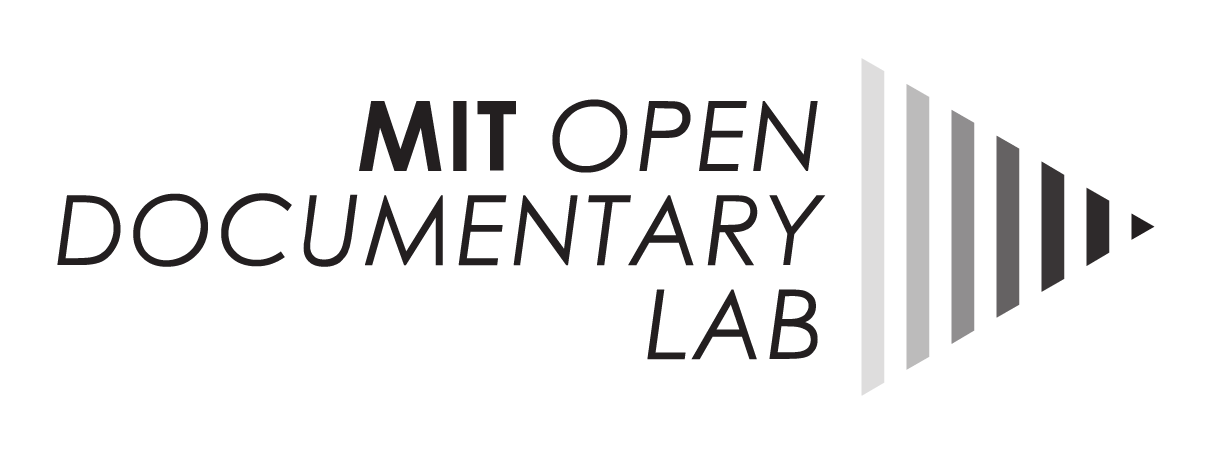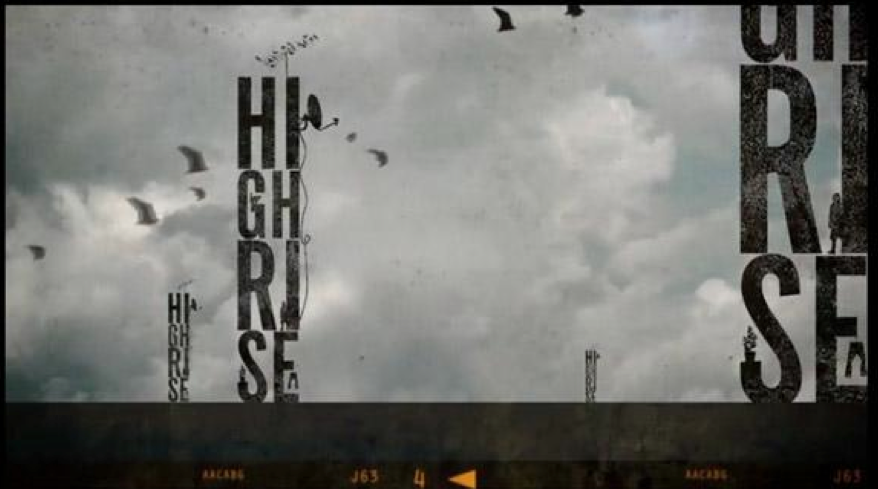
14 May Funding models for documentary. Part 3: The transmedia documentary | Arnau Gifreu
Funding Models for Documentary
Part 3: The Transmedia documentary
By Arnau Gifreu
Broadcasters constitute an important part of the budget for transmedia documentary production, but there are still few television networks involved in this format. In countries with a strong interest in cultural issues, however, the networks are usually heavily invested in the documentary as a form of storytelling and technology. Examples of this tendency are the NFB, Arte and RTVE (Spanish TV). Generally, a public or private television station will join up with a multimedia production company or studio; to this initial alliance are added development funds from the government or private institutions, and they sometimes also seek the complicity of a technology developer. This structure, with greater or lesser variation, is becoming consolidated in countries like Canada and France, which lead in the production of this narrative form.
In the Canadian case, the government allocates a core budget to institutions that produce interactive audiovisual works, such as the National Film Board (which creates competitions to produce works), and secondly, technological support agreements with technology developers like Mozilla are set up (to optimize the code and innovate). Multimedia producers and studios such as Helios Design Labs are also involved in order to design the interface and code. The tasks can vary depending on each production, development and implementation contract. In the case of the transmedia project Highrise, the structure that makes it possible to produce big successful productions with the NFB is composed of Helios Design Labs (production company) and Mozilla Foundation on specific projects (Web Made Movies, Popcorn.js).

Source: National Film Board of Canada.
In the French case, the government is committed to this format and broadcasters also come into play (ARTE, France 5). Multimedia studies like Upian or Honkytonk Films provide the interface and navigation system, and finally technology developers with multimedia tools like Honkytonk (Klynt) or Hecube (3WDOC) close the circle. In the case of the prolific partnership between Arte and Upian, we see how the structure we have characterized above is also feasible: Government (CNC) + ARTE + Upian.
Both Canadian and French journalism falls into this structure, including digital newsrooms and editions of newspapers (The Globe and Mail, Le Monde, France 24, etc). An interesting fact worth mentioning is the strategic alliance between the two major broadcasters which produce interactive and transmedia works. In recent years, ARTE and the NFB have frequently joined together in order to co-produce large-scale projects such as Fort McMoney (David Dufresne, 2013) or Interactive Haiku (Various authors, 2015).
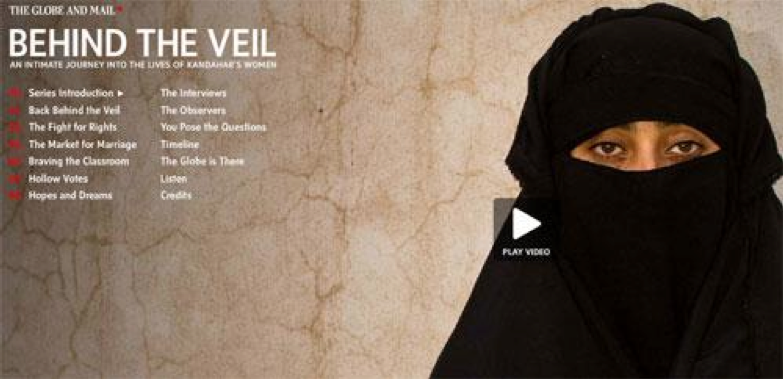
Behind the veil project (The Globe and Mail).
The Spanish case is special because RTVE has two formulas for producing interactive documentaries: self-produced, through its Audiovisual Innovation Laboratory, founded in 2012, and through co-production, based on the annual selection of three web documentary projects.
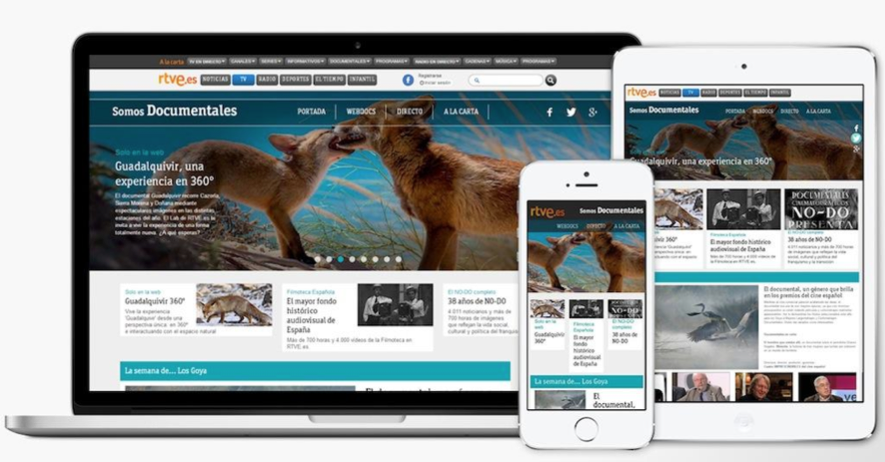
Spanish TV Documentary portal (Somos Documentales – We are documentaries)
To sum up the entire series, we will analyze below the three proposed models (audiovisual, multimedia and transmedia) in order to compare what kind of actors dominate each stage of documentary narrative in relation to the financing of the works.
Table 1. Actors in the audiovisual, interactive and transmedia documentary
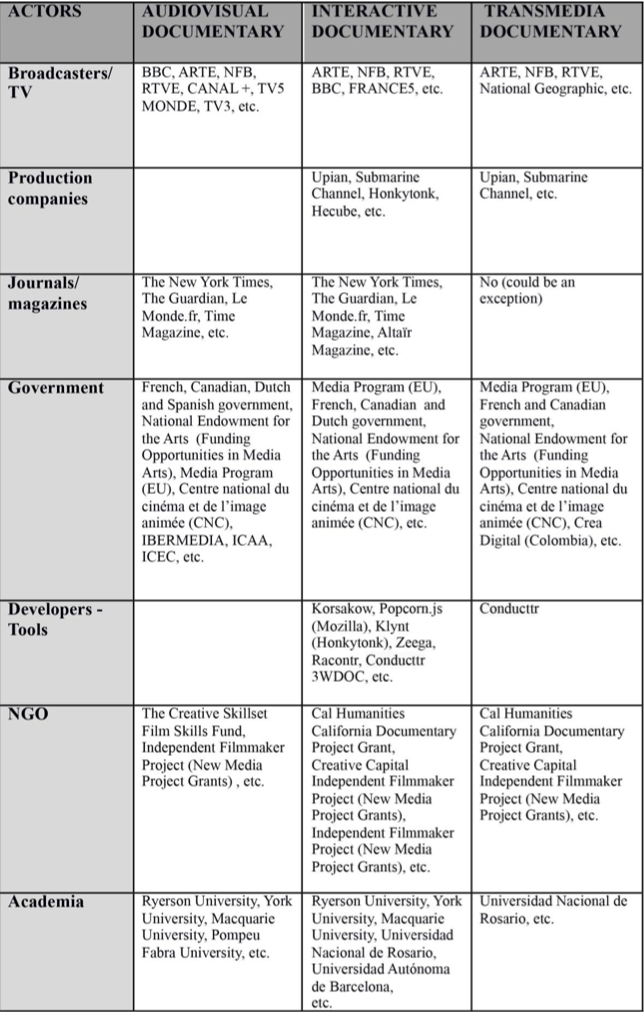
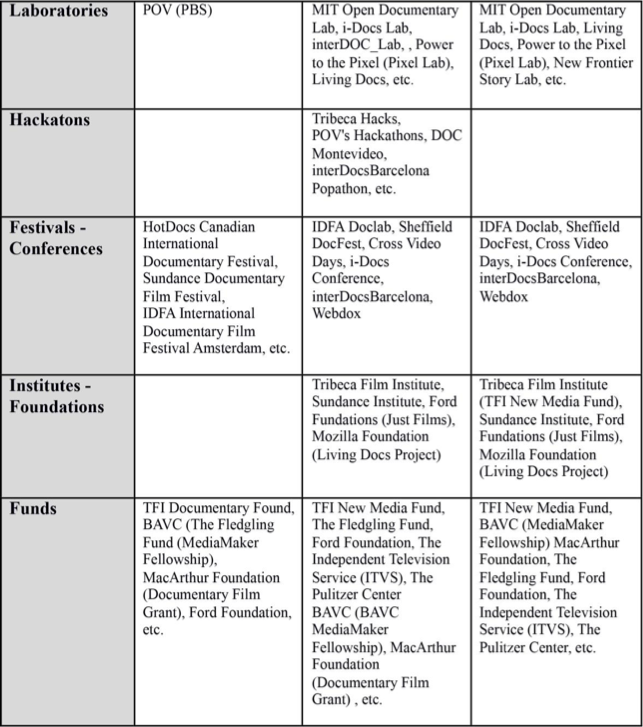
Note: this represents on-going research, so table 1 doesn’t show all the actors involved in the audiovisual, interactive and transmedia documentary production.
Arnau Gifreu and Valentina Moreno
References
Gifreu-Castells, Arnau; Moreno, Valentina (2014). Estrategias y modelos de financiación del documental interactivo y transmedia [Strategies and financing models for interactive and transmedia documentaries]. Fonseca, Journal of Communication, n. 9, pp. 41-63. ISSN: 2172-9077.
Gifreu-Castells, Arnau (2013). El documental interactivo. Evolución, caracterización y perspectivas de desarrollo. [The interactive documentary. Evolution, features and development perspectives]. UOC Press. Editorial UOC. ISBN: 978-84-9064-035-7.
Gifreu-Castells, A.(2013). El documental interactiu com a nou gènere audiovisual. Estudi de l’aparició del nou gènere, aproximació a la seva definició i proposta de taxonomia i d’un model d’anàlisi a efectes d’avaluació, disseny i producció [The interactive documentary as a new audiovisual genre. Study of the emergence of the new genre, approach to its definition and taxonomy proposal and a model of analysis for the purposes of evaluation, design and production][PhD]. Barcelona: Universitat Pompeu Fabra. Departament de Comunicació.
Moreno, V. (2013). El Documental Interactivo, una aproximación a un género en gestación [Interactive Documentary, an approach to a genre in pregnancy][Master’s Degree Thesis]. Madrid: Universidad Complutense de Madrid. Facultad de Ciencias de la Información.
Bonus tracks
Kaufman, A. Transmedia Documentaries are Sexy, But Who’s Watching?
Indiewire. http://www.indiewire.com/article/transmedia-documentaries-are-sexy-but- whos-watching
Costa, A. L. PBS Mediashift. How Transmedia Storytelling Could Revolutionize Documentary Filmmaking. http://www.pbs.org/mediashift/2012/09/how-transmedia- storytelling-could-revolutionize-documentary-filmmaking271/
C.H. Davies (2013). “Audience Value in Transmedia Products”, pp 175-190 in T. Storsul and A. Krumsvik (eds.), Media Innovations (Göteborg: Nordicom). http://www.ryerson.ca/~c5davis/publications/Davis%20- %20Transmedia%20audiences.pdf


